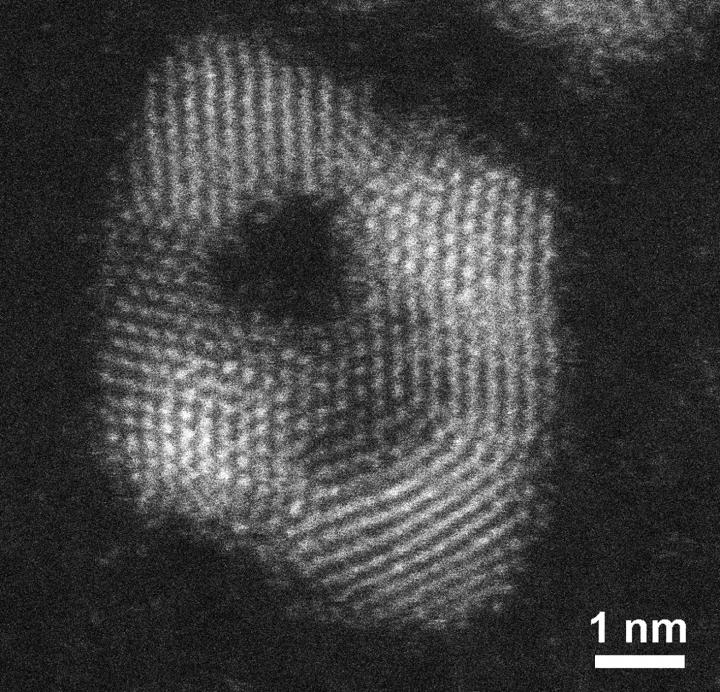Ruthenium nanoframes open the doors to better catalysts

Using a two-part process, chemist Xiaohu Xia and his team found a way to turn ruthenium into a nanoframe, a promising metal catalyst. Credit: Michigan Tech, Xiaohu Xia
Last week, Nano Letters published the team's study, which covers how the researchers made a catalyst for the first time out of the noble metal ruthenium.
The effort brought together a team from Michigan Tech, the Argonne National Laboratory, University of Texas at Dallas, and Temple University. The team's break-through is not limited to ruthenium, however. Xia says the process they developed is most important.
“We are fine-tuning the surface, size, shape and crystal structure,” he says. “Our goal is to increase their catalytic activity while reducing the usage of this precious material.”
The key is more surface area. Nanoframes, which are nanoparticles with open centers, have an advantage with their gazebo-like atomic arrangements.
Xia adds that not only shape but crystal structure is important, “Because catalytic reactions occur only on the surface of materials, the surface atom arrangement has a great impact on determining the catalytic activity.”
In general, ruthenium nanocrystals adopt the hexagonal close-packed (hcp) structure. But Xia and his team came up with an elegant solution for making ruthenium nanocrystals with another structure: face-centered cubic (fcc) structure.
The process involves two steps, growth and etching. Basically, hcp ruthenium doesn't naturally grow in a crystal structure that can be made into a nanoframe. So, the team directed ruthenium growth on a palladium seed with an fcc structure, which the ruthenium replicated. Then they removed the palladium core, leaving behind an fcc ruthenium nanoframe.
To ensure the material had catalytic potential, the team ran the ruthenium nanoframes through several diagnostic tests: the reduction of p-nitrophenol by NaBH4 and the dehydrogenation of ammonia borane. While more data is needed to quantify how well ruthenium holds up against existing metal catalysts, Xia says the results from their experiments are promising.
Once the material has been vetted, researchers will be able to start applying the catalyst to several big challenges. Namely, Xia says that ruthenium nanoframes and other catalysts with unique crystal structures could improve hydrogen fuel production and carbon storage.
Media Contact
All latest news from the category: Materials Sciences
Materials management deals with the research, development, manufacturing and processing of raw and industrial materials. Key aspects here are biological and medical issues, which play an increasingly important role in this field.
innovations-report offers in-depth articles related to the development and application of materials and the structure and properties of new materials.
Newest articles

Combatting disruptive ‘noise’ in quantum communication
In a significant milestone for quantum communication technology, an experiment has demonstrated how networks can be leveraged to combat disruptive ‘noise’ in quantum communications. The international effort led by researchers…

Stretchable quantum dot display
Intrinsically stretchable quantum dot-based light-emitting diodes achieved record-breaking performance. A team of South Korean scientists led by Professor KIM Dae-Hyeong of the Center for Nanoparticle Research within the Institute for…

Internet can achieve quantum speed with light saved as sound
Researchers at the University of Copenhagen’s Niels Bohr Institute have developed a new way to create quantum memory: A small drum can store data sent with light in its sonic…





















